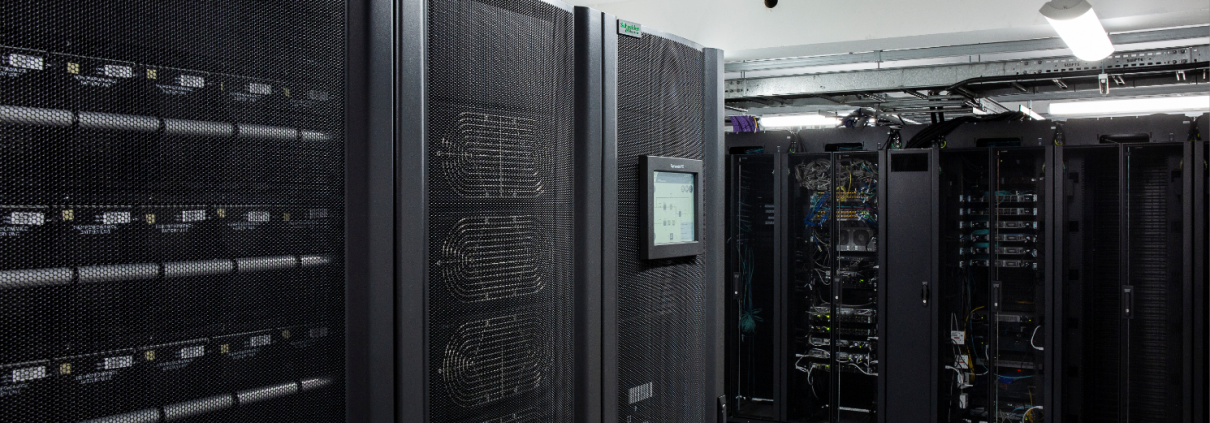Breaking Down What is in a Data Centre?
A data centre is a specialised facility specifically designed to house and manage critical computing equipment and infrastructure essential for the storage, processing, and distribution of digital data and services.
All of this equates to keeping your business or organisation up and running from a digital perspective.
Ever tried to work when you can’t send emails? Or finish off a team project you can’t access your network drive? It’s extremely frustrating, and can actually cost your business money.
The long and short of it is that, without a high-performing, well-designed data centre for your business, your daily operations could realistically grind to a halt.
So, with that in mind, it’s important to understand what a data centre is, and how it supports your business.
The main elements of a data centre are outlined below:
What’s in a Data Centre?
Servers and Computing Equipment
Data centres contain IT racks or cabinets filled with servers, which are powerful computers that run applications, process data, and serve information to users. These servers can include web servers, database servers, application servers, and more.
Networking Infrastructure
Data centres have a complex network of routers, switches, and cables to ensure that data flows efficiently between servers and to external networks like the internet. This infrastructure enables communication between various components within the data centre and connects the data centre to the outside world.
Storage Systems
Large data centres have extensive storage systems, such as hard drives, solid-state drives, and network-attached storage (NAS) devices, to store vast amounts of data, files, and databases.
The Physical infrastructure required to support your IT Equipment
In addition to understanding what a data centre does for your business, it’s crucial you also have an idea of the physical requirements to building and maintaining a data centre. If you’re ever facing any server downtime, it’s highly likely it’s the physical elements that are facing issues.
Let’s take a look at the physical infrastructure needed to design, build and maintain a data centre.
Cooling Systems
Data centres generate a significant amount of heat due to the operation of servers and networking equipment. Around 98% of the power that enters a data centre, is turned into low grade heat. Cooling systems, including air conditioning and precision cooling units, are crucial to maintaining the optimal temperature and humidity levels to prevent overheating and equipment failure.
Constant Supply of Power
Data centres require a stable and reliable power supply to ensure uninterrupted day-to-day operations. They have backup power sources, such as uninterruptible power supplies (UPS) and generators, to safeguard against power outages. The UPS is specifically designed to kick in in the event of a power failure and bridges the gap between power loss, and a generator starting. Generators then support the load for longer outages until the grid power returns.
Security
Security measures are critical to protect the data centre’s physical and digital assets. Access control systems, surveillance cameras, biometric scanners, and security personnel are commonly employed to safeguard the facility.
Redundancy
To ensure high availability and minimise downtime, data centres incorporate redundancy in various elements. This redundancy includes duplicate servers, network connections, power sources, and cooling systems. If one component fails, another takes over to keep services running. There are various levels of redundancy, including N+1, where you have the hardware to meet your capacity + one extra system that takes the strain if one hardware element is out of service. 2N involves doubling the quantity of hardware above what it needed for normal operation.
Fire Suppression
Data centres deploy specialised fire suppression systems that can extinguish fires without causing damage to sensitive equipment. These systems often expel the oxygen from the data centre so the fire can not propagate.
Monitoring and Management Software
Sophisticated software is used to monitor the health and performance of all data centre components. This software alerts operators to issues and helps manage resources efficiently.
Environmental Controls
Data centres control factors like temperature, humidity, dust, and contaminants to create an optimal environment for sensitive equipment.
A data centre is a highly controlled and secure facility that brings together computing hardware, networking infrastructure, cooling, power, and other critical components to ensure the reliable and efficient operation of digital services and data storage for businesses and organisations.
Designing and building data centres that perform well, with minimal downtime or disruption takes into account all of the elements above. As such, expertise and experience is crucial when creating a data centre that delivers the needs of your individual business or organisation.
Here at Advanced Power Technologies, we’re experts in doing just that. Get in touch to find out more about creating or improving your data centre.






